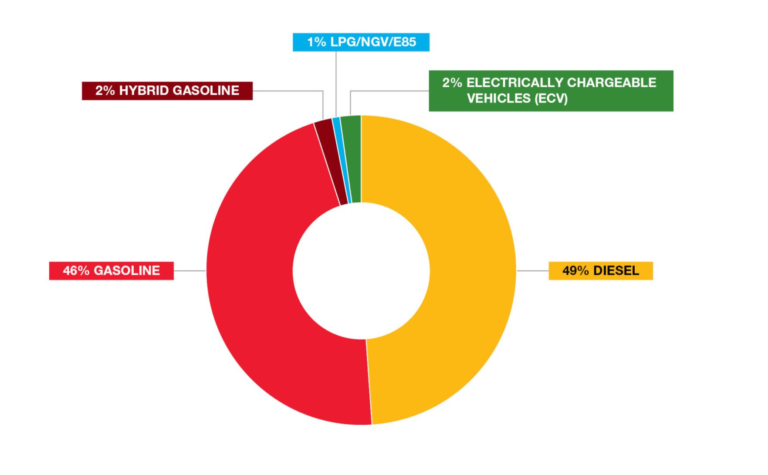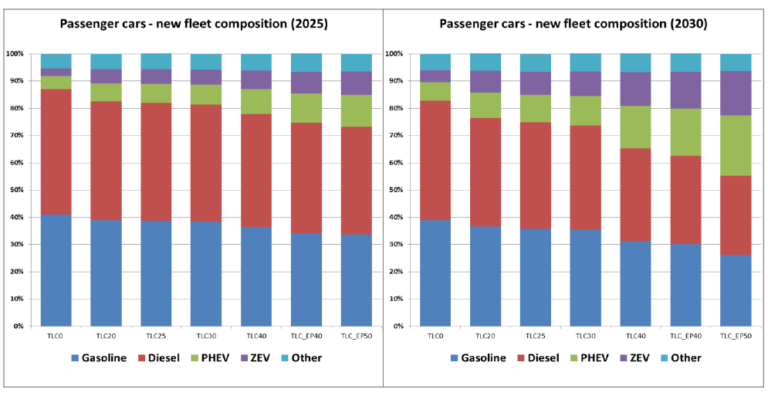Methyl tertiary butyl ether (MTBE) and ethyl tertiary butyl ether (ETBE) play a key role in the current global petrol market. From a consumer perspective, ethers provide a high-octane, non-sulphur and non-aromatic oxygenated blendstock.
The development of the fuel ether market is driven by several factors, including:
- Legislation: in Europe, the Renewable Energy Directive and Fuel Quality Directive as well as other regulations and legislation related to cars and transport will be the main drivers for changes in the fuel and ether markets in the near future. These pieces of legislation set targets for the share of biofuels in transport fuels and greenhouse gas emission (GHG) reduction and can stimulate the market. Please check our Policy Priorities section to learn more.
- Technological developments: some of the potential future developments in the fuel ether market could include higher-octane production, 100% bio-ether production, conversion of TAME to TAEE and ternary blending.
Petrol market
According to Fuels Europe / EMISIA nearly 46% of vehicle market penetration in 2016 was represented by petrol cars. Hybrid cars accounted for 2.1% of new cars. This represents a significant share of today’s fleet. According to the European Commission’s impact assessment on CO2 standards for cars, the demand for petrol cars will decrease in the next 10 years and petrol alone will account for over 35% of powertrain composition in 2025 and more than ¼ in 2030. Meanwhile, the Commission predicts an increase of the uptake of Plug-in Hybrid Electric Vehicles (PHEV) from today levels to over 10% in 2025 and more than 20% in 2050. PHEVs rely on petrol to extend their range.
Technological developments
Some of the potential future developments in the fuel ether market could include higher-octane production, 100% bio-ether production, conversion of TAME to TAEE and ternary blending. Read more below:
- Higher Octane Petrol: higher-octane fuels contribute to a cleaner environment as higher-octane (RON 102) ratings enable a more complete combustion of the fuel, which reduces exhaust emissions and improves air quality. Bio-ethers have the capacity to raise the fuel octane number and reduce exhaust emissions in the air. They are therefore the preferred choice of many refiners when looking for cleaner and more efficient transportation fuels.
- Bio-MTBE Production: the Renewable Energy Directive states that if a biofuel is derived from a waste or residue, a so-called second generation biofuel, the bio-energy content can count double, which provides an incentive to move to second generation biofuels. Bio-methanol based on crude glycerin, a waste product from biodiesel production, is available in Europe, albeit in limited volumes. Therefore, Bio-MTBE produced from this bio-methanol has a bio-energy content higher than bio-ETBE.
- Conversion of TAME to TAEE: only a small fraction of the EU TAME (based on fossil methanol) capacity has been converted to bio-TAEE. One of the potential outlets for the so-called C5 streams is to convert it to bio-TAEE. TAEE with its low volatility and high octane is an attractive opportunity for using ‘excess’ C5 streams and introducing biofuels.
- Ternary Blending: a mixture of a fuel ether e.g. ETBE or TAEE, ethanol and petrol is called a ternary or three-way blend. Ternary blending has specific advantages compared to directly blended ethanol alone.
- Adding ETBE or TAEE to petrol and ethanol improves (lowers) the vapour pressure of the mixture making it easier for refineries to meet the fuel specification limit of 60 kPa defined in the Fuel Quality Directive. Thus, ternary blending reduces VOC emissions further compared to directly blended ethanol only.
- The ability to stabilise or lower the vapour pressure will especially be beneficial in the warmer EU countries of the Mediterranean Region where heat increases the volatility of the fuel (Source: SAE International Journal of Fuels and Lubricants, April 2009, vol. 1 no. 1 1584-1594)


